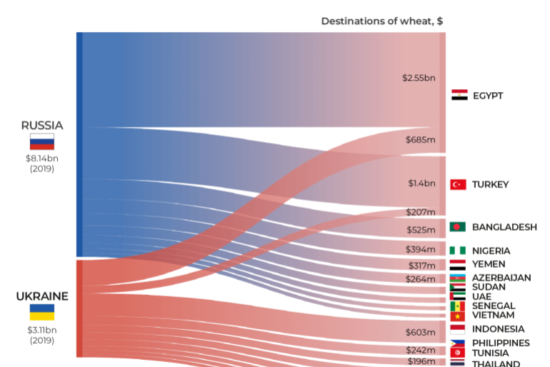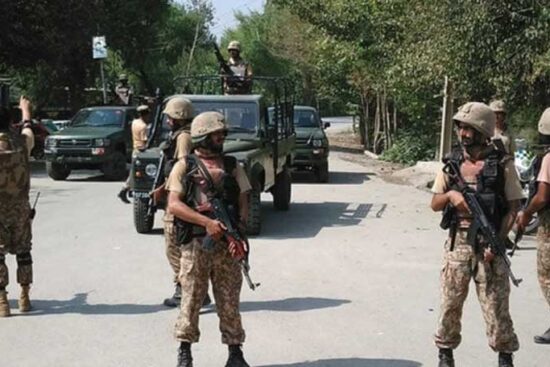
The ongoing Sikh farmers’ protest in India has once again highlighted the long-standing frustrations and sense of deprivation in the Sikh community. The ‘Delhi Chalo’ march, led primarily by Sikh farmers from Punjab and Haryana, is more than just a call for agricultural reforms; it is a manifestation of broader Sikh dissatisfaction with the central Government’s policies, which are perceived to be indifferent or even hostile to minority communities, particularly Sikhs.
The RSS’s vision of a “Hindu Rashtra” has caused concerns among minorities.
Since Narendra Modi rose to power in 2014, his administration has been accused of supporting a Hindu nationalist agenda that attempts to marginalize minority groups, while consolidating Hindu identity as the basis of Indian nationalism. This impression is heavily influenced by the RSS’s operations and beliefs, a right-wing, Hindu nationalist paramilitary volunteer organization that is considered to be the parent body of the ruling Bharatiya Janata Party (BJP). The RSS’s vision of a “Hindu Rashtra” (Hindu Nation) has caused concerns among Sikhs and other minorities, making them highly insecure about their cultural and religious identities.
Background and Grievances of Sikh Farmers
The farmers’ agitation, particularly involvement of the Sikh community, must be understood in the context of perceived marginalization that led to Sikh farmers’ protest in India. The legislation that provoked the protests was viewed not only as harmful to farmers’ economic interests but also as indicative of a larger disdain for minority rights and concerns. The farmers’ primary demands, which include a legal guarantee of the Minimum Support Price (MSP) and repeal of three contentious farm laws, are part of a larger narrative of demanding respect, security, and autonomy within the Indian polity.
Also Read: Indian Farmers Movement: ‘Chalo Delhi’ March
Analysis of Agricultural Reforms and Minority Concerns
The first one is the Farmers’ Produce Trade and Commerce (Promotion and Facilitation) Act, 2020: This regulation enables farmers to sell their produce outside the Agricultural Produce Market Committee (APMC), giving them more possibilities for sale. However, farmers are concerned that it may result in the disintegration of the APMC system, leaving them exposed to exploitation by private purchasers. The second is the Farmers (Empowerment and Protection) Agreement on Price Assurance and Farm Services Act, 2020: This law makes it easier for farmers and agribusinesses to get into contract farming arrangements.
While supporters claim that it offers farmers guaranteed incomes and access to contemporary technologies, detractors argue that it may lead to the corporatization of agriculture and jeopardize farmers’ autonomy. The third is the Essential Commodities (Amendment) Act, 2020: This legislation eliminates cereals, legumes, oilseeds, edible oils, onions, and potatoes off the list of essential commodities. It provides for the regulation of certain commodities only in extreme circumstances, such as war, famine, or a significant price increase. Critics worry that it could lead to stockpiling and illicit selling, reducing farmers’ income and food security.
This crisis has resurrected memories and sentiments of the Khalistan Movement, a secessionist movement that aimed to establish a separate country for Sikhs in India’s Punjab area in the 1980s and early 1990s. Although the Indian Government successfully suppressed the insurrection, the underlying issues of Sikh identity, political representation, and frustrations over perceived injustices persist. The current rallies have featured sporadic displays of Khalistani flags and chants, which the Government has used to discredit the movement, claiming it is infiltrated by anti-national forces.
RSS Influence and Minority Marginalization
However, the Sikh community and farmer organizations have strongly opposed such charges, claiming that their demonstration is for farmers’ rights and not part of a separatist strategy. Modi Government’s response to the farmers’ protests has included attempts at negotiation mixed with crackdowns, internet shutdowns, and the labeling of some demonstrators as “anti-national.” Such measures have further exacerbated Sikhs’ suspicion of the Government and fueled the narrative of a state that is inattentive, if not hostile, to minority concerns.
Beyond the immediate issues of farm regulations and agricultural reforms, the protests reflect the Sikh community’s overall concerns about their status in Modi’s India. Concerns range from perceived negative economic policies to cultural and religious challenges caused by the BJP-RSS ideology’s majoritarian tilt. This climate has ramifications for India’s internal cohesion, as the country takes pride in its pluralism and diversity.

Global Dimension: Sikh Diaspora and Diplomatic Relations
The global dimension of this issue must not be neglected. The Sikh diaspora in Canada has been aggressively opposing the Indian government, focusing on the case of Hardeep Singh Nijjar, a Sikh separatist leader, and Canadian national who was slain in Surrey, British Columbia, in June 2023. This has drawn substantial worldwide attention to concerns of Sikh separatism, the demand for Khalistan (an independent Sikh state), and India’s handling of these issues, causing a rift in diplomatic relations between Canada and India. In September 2023, Canadian Sikhs protested outside India’s diplomatic posts in Ottawa, Toronto, and Vancouver against Indian Prime Minister Narendra Modi, waving Khalistan banners and advocating for an independent Sikh state.
International Reaction to Sikh Separatism and Protests
The diplomatic conflict led to the postponing of a Canadian trade trip to India in October 2023, as well as a pause in trade talks between the two governments. The protests are part of a broader global reaction to the treatment of Sikhs in India and the crackdown on Sikh separatism, including the manhunt for Amritpal Singh, a pro-Khalistan activist, which sparked protests not only in Canada but also in the United States, United Kingdom, Australia, and New Zealand.
These farmer protests in India are spearheaded primarily by Sikhs, representing the community’s struggle for recognition, respect, and rights within the Indian polity under Modi’s Government. The Sikh community’s participation in these protests is closely linked with issues of cultural identity, political representation, and the larger story of minority rights in India. The Khalistan Movement’s shadow lingers over these protests, not as a driving factor but as a reminder of unresolved grievances and the ongoing struggle for Sikh autonomy and dignity. As the impasse continues, it is unclear how the Modi Government will address these multiple layers of discontent and whether any resolution would pave the path for a more inclusive and respectful engagement with India’s Sikh minority and other marginalized communities.
The opinions shared in this article reflect the author’s personal views and do not necessarily align with the institution’s official stance.

















Leave a Reply